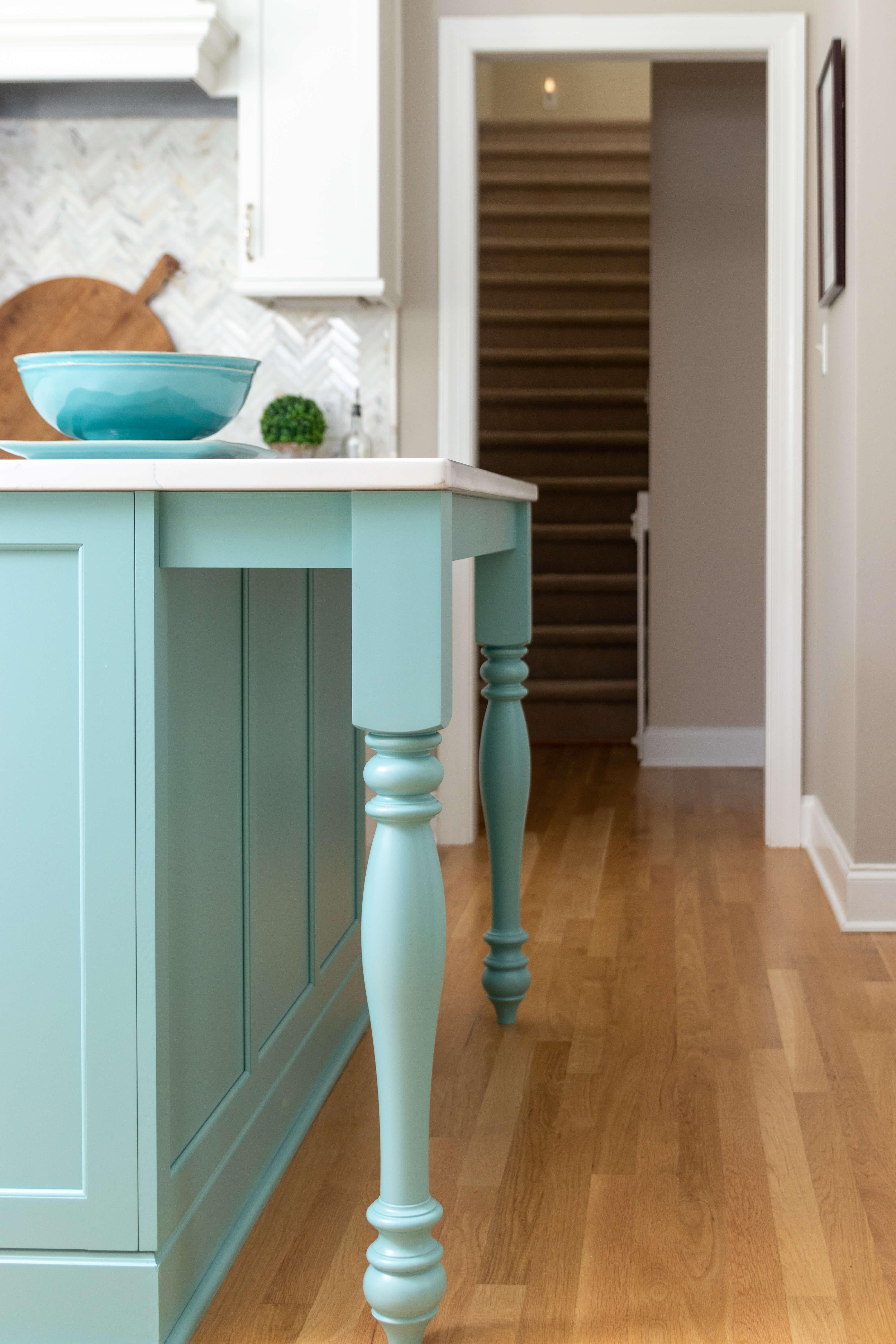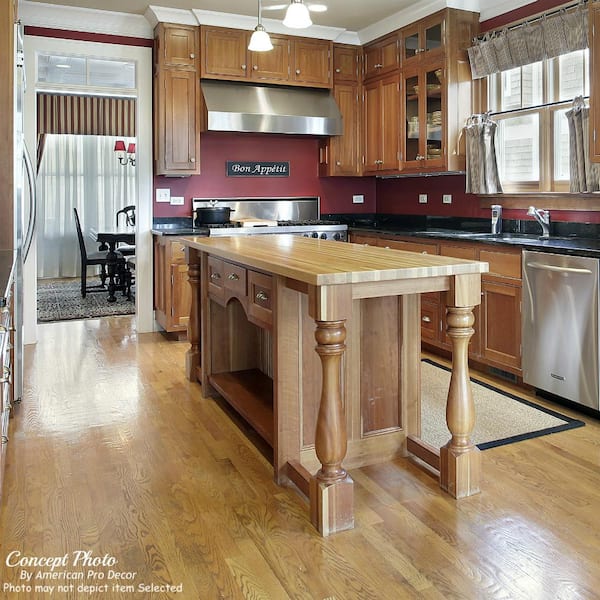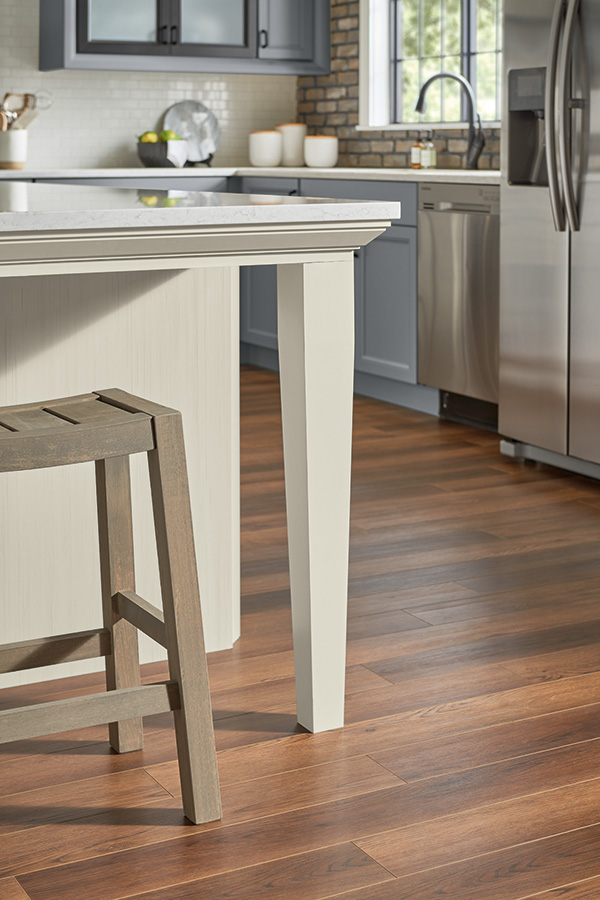Resilient Wood Kitchen Island Legs for Your Home Remodel
Resilient Wood Kitchen Island Legs for Your Home Remodel
Blog Article
An Overview to Selecting the Ideal Cooking Area Island for Your Home
Comprehending your kitchen's spatial dynamics is the initial action, guaranteeing that the island fits seamlessly without interfering with the circulation. The choice of products and surfaces likewise plays a crucial duty in harmonizing the island with your kitchen area's overall design.
Analyzing Your Space
Before picking a kitchen island, it is vital to extensively evaluate your area to ensure the enhancement will be both practical and visually pleasing. Begin by determining the offered location, including the width, length, and height of the kitchen area. Accurate dimensions are vital to avoid acquiring an island that overwhelms the area or one that is overmuch small.
Take into consideration the existing layout and how the island will incorporate with the present traffic flow. A well-placed island must not hamper or block paths accessibility to important devices, such as the refrigerator, stove, and sink. Leave appropriate clearance space-- normally around 36 to 48 inches on all sides-- to enable comfy motion and work area effectiveness.
Next, review the all-natural light and sightlines within your kitchen area. An island that obstructs a home window or interferes with aesthetic cohesion can make the area feel confined and dark. Consider just how the island's positioning will certainly affect lighting and presence, guaranteeing it boosts instead than diminishes the cooking area's ambiance.
Figuring Out the Purpose
Determining the objective of your cooking area island is an important action in ensuring it fulfills your details needs and choices. Before diving right into design or size factors to consider, it is vital to clarify what main feature the island will offer in your kitchen area. Will it be a main hub for dish prep work, an informal eating location, or potentially an extra storage space solution?
In addition, enough counter space for chopping and blending, along with available storage for kitchen area devices and components, can change the island into an efficient workstation. Conversely, if the island is meant to help with social communications or serve as an eating area, seating setups end up being vital.

Selecting the Right Size
Choosing the right dimension for your kitchen island is a balance of performance and area optimization. An excellent kitchen island should supply enough work area while making sure that movement around the kitchen area remains unobstructed. Begin by determining your cooking area space; a minimal clearance of 36 to 42 inches around the island is required to enable for comfy activity and ease of access.
The dimensions of the island must show its intended usage. If the island will certainly serve mostly as a prep location, a width of 24 to 36 inches could be straight from the source adequate. If it is to suit seats, you ought to consider a larger size, typically determining at the very least 48 inches in width. Islands committed to sinks or home appliances may need extra area to house these attributes properly.

Lastly, make certain that the island's dimension matches the overall cooking area design, avoiding any kind of frustrating existence that may interfere with the cooking area's visual and energy - kitchen island legs. Careful preparation and precise dimensions will aid you achieve a effective and unified kitchen area environment
Deciding On Products and Finishes
After figuring out the ideal size for your kitchen island, the following step entails selecting suitable products and surfaces. The choice of products considerably impacts both the aesthetic allure and performance of your cooking area island. Popular materials for kitchen counters consist of granite, butcher, and quartz block, each offering distinct advantages. Granite, known for its longevity and classic style, is extremely immune to scrapes and heat. Quartz, an engineered stone, offers a non-porous surface area that resists discolorations and bacteria. Butcher block, made from navigate to this website wood, adds a cozy, rustic beauty and is ideal for cooking.
Along with the counter top, think about the materials for the island base. Strong wood supplies a timeless, tough appearance, while stainless-steel provides a sleek, modern appearance and is very easy to clean. Painted surfaces can present a sprinkle of color, with alternatives varying from muted pastels to vibrant, lively tones.
Pay interest to the longevity of coatings, particularly in high-traffic areas, to maintain the island's appearance over time. Picking the ideal materials and surfaces will boost both the performance and visual charm of your kitchen island.
Including Functional Attributes
Integrating practical attributes into your kitchen area island can dramatically improve its energy and ease, changing it into a flexible centerpiece of your kitchen. One necessary function to consider is added storage. Integrating closets, cabinets, and open shelving can offer much-needed space for kitchenware, utensils, and small home appliances, assisting to preserve a clutter-free atmosphere.
An additional important addition is a built-in sink or cooktop, which can improve dish preparation and clean-up procedures. A sink can assist in tasks such as washing vegetables and cleaning recipes, while a cooktop can permit food preparation directly on the island, cultivating an extra interactive and social food preparation experience.
Consider integrating seating options, especially if your cooking area doubles as an informal dining area. Bar stools or integrated benches can transform the island right into a multifunctional space for meals, homework, or informal events.
Lastly, integrating electrical outlets into your he has a good point kitchen island can improve its usefulness. Outlets supply hassle-free access for little cooking area devices, billing terminals for digital gadgets, and extra lights alternatives.
Conclusion

Before picking a kitchen area island, it is crucial to extensively evaluate your space to guarantee the addition will certainly be both practical and visually pleasing.Selecting the right size for your kitchen island is an equilibrium of capability and room optimization. kitchen island legs. An excellent kitchen area island should offer enough office while making sure that movement around the cooking area remains unblocked.Including practical functions right into your kitchen island can considerably boost its energy and ease, transforming it into a flexible focal point of your kitchen area.In conclusion, choosing the excellent kitchen island necessitates an extensive analysis of the offered room, quality regarding its primary function, and careful factor to consider of the appropriate dimension and materials
Report this page